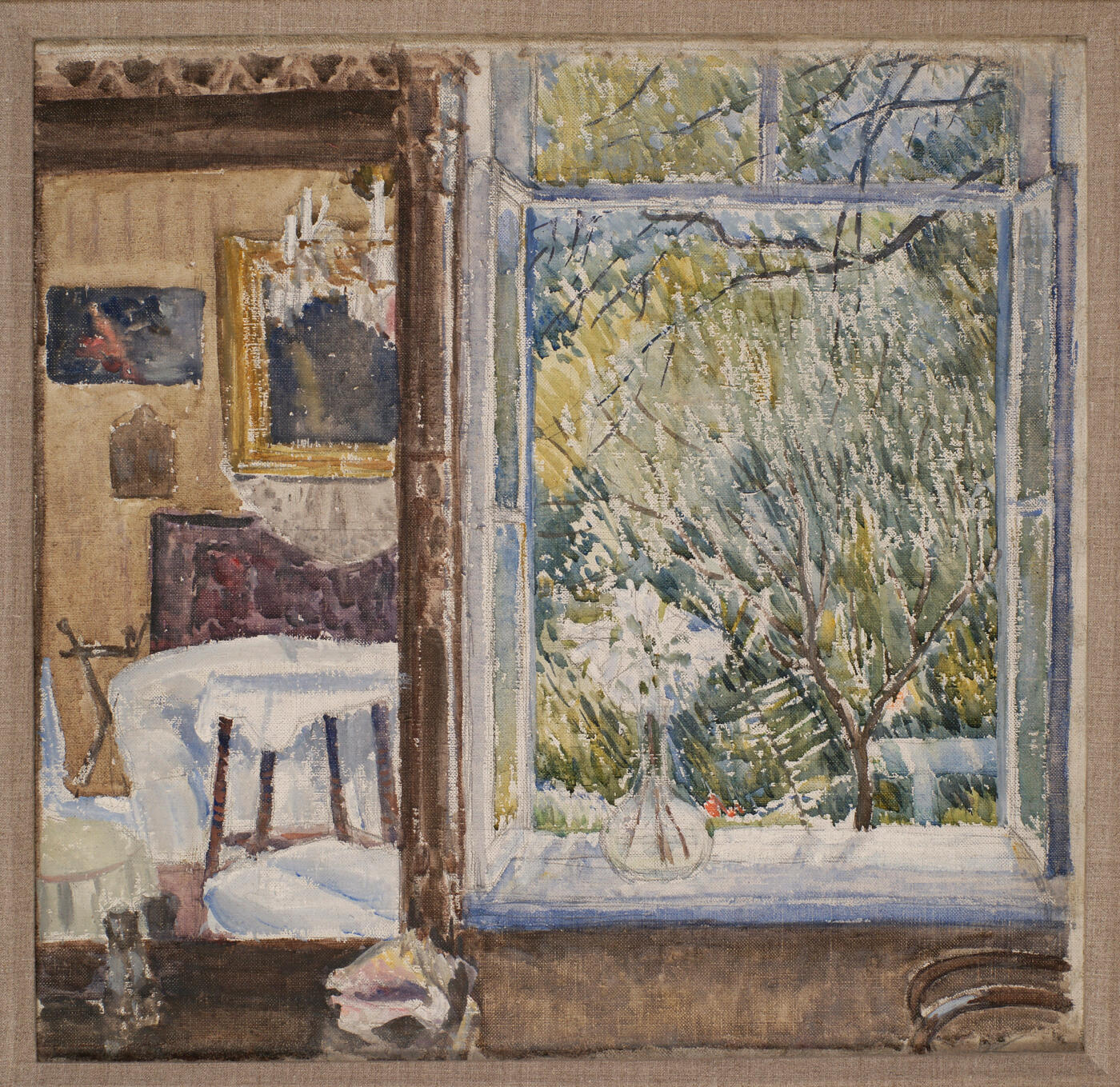4 June 2014 Russian Art Auctions
4 June 2014

*§ 17. LARIONOV, MIKHAIL (1881-1964)
Une journée de mai.
Oil on canvas, laid on board, 51.5 by 53.5 cm.
Sold privately
Provenance: The Everest Collection, Lausanne (label on the reverse).
Private collection, Europe.
Exhibited: Michel Larionov, Musée des Beaux-Arts, Lyon, 17 March–15 May 1967, No. 25 (label on the reverse).
Michel Larionov, Acquavella Galleries, New York, 22 April–24 May 1969, No. 11 (label on the reverse).
Rétrospective Larionov–Goncharova, Musée d’Ixelles, Brussels, 29 April–6 June 1976, No. 13 (label on the reverse).
Literature: Exhibition catalogue, Michel Larionov, Lyon, Musée des Beaux-Arts, 1967, No. 25, listed.
Exhibition catalogue, Michel Larionov, New York, Acquavella Galleries, 1969, No. 11, illustrated and listed.
Exhibition catalogue, Rétrospective Larionov–Goncharova, Brussels, Musée d’Ixelles, 1976, No. 13, illustrated.
Une journée de mai is one of the masterpieces from Mikhail Larionov’s early period. Painted with amazing purity and clarity of manner, it belongs to the artist’s best canvasses from the middle of the first decade of the 20th century, which are rare even in museums. Few of his paintings from this period, as distinct from his pastels and gouaches, have been preserved. Accordingly, each of them is especially valuable.
The artist painted Une journée de mai in 1904 after being sent down for a year from the Moscow School of Painting, Sculpture and Architecture for showing works in the pupils’ exhibition that were “indecent in content”. Over this time spent away from classroom study Larionov, enthralled by the Impressionists he saw in the Moscow collection of I. Shchukin, really began to feel his independence as a painter, and free of academic didacticism. Each summer he set off from Moscow to Tiraspol, to the house of his maternal grandmother where he had spent his childhood. There he would devote himself entirely to works drawn from nature. It is truly impossible to overestimate the importance of these to the story of the artist’s career.
Taking over a wing of his grandmother’s house, with its extensive orchard of apricot trees, and converting it into his studio, Larionov created a series of canvasses extolling the everyday life that was going on outside his window. Flowers in pots, lilac bushes, geese and turkeys strutting round the yard became the motifs in his best
work of the first five years of the century. His conservatories, acacias, roses wet with rain, and even his pigs literally grow out of a study into a self-sufficient composition, even preserving the typically small dimensions of a study and the spontaneous elan with which the paint is applied.
It is difficult to find a better example than Une journée de mai of how genres were deliberately mixed. This device became a special characteristic of Larionov’s painting in the first decade of the 20th century. At this time he crosses over from painting still lifes to depicting interiors. These, in turn, are united through open doors and windows with the landscape of garden and street. In its compositional structure, Une journée de mai harks back to Velazquez’s Las Meninas, in which the optical centre of the picture is a mirror reflecting the royal couple Philip IV and Mariana of Austria and in the doorway next to them the figure of Chancellor Olivares. But if in Velazquez this motif is only part of a composition that is, as a whole, much more complex, then in Larionov’s case the borders of window, mirror and real space in combination become sufficient on their own. Their fragmentary nature and juxtaposition generate expression. The feeling is engendered of a wholeness about the world, parts of which are represented by the branches of trees outside the window, the flowers in a vase on the window-sill, the furniture in the room reflected in the mirror, and the things actually present in the picture – a figurine on the mantel and the chair-back which invariably creeps into Larionov’s Tiraspol canvasses. Larionov breaks with the hierarchy of main and subordinate subject. In the composition of Une journée de mai there is no definite centre or, rather, it is constantly shifting, depending on what arrests the attention of the viewer. The world which surrounds the artist within and without is, as it were, flung open on all sides “for a broader outlook”. At the same time the directions in which there is spatial breakthrough are different: the window opening leads the eye into the distance, but the mirror extends the space behind the artist and moves him forward.
This fluidity and oscillation of ideas immediately unsettles the mind and imparts to the picture an element of surprise. In this canvas the images of mirror and window – critical in art history – take on the significance of spatial and figurative modulations.
The motion of trunks and branches, rendered in long brushstrokes of brown pigment, is extended in undifferentiated, multidirectional brushstrokes of light green that convey the inimitable fuzziness of their appearance in spring. This unstoppable movement of the brush “outside the window” is counteracted by the stillness of the objects depicted behind the looking glass. But all of them – even the twigs in the orchard and the antique furniture in its covers – seem dissolved in a single stream of pearly, diffuse, golden light.
The obvious formative hand in Une journée de mai, with its apparently accidental articulation, intellectually conceived composition and inclination towards a generalised colour impression and decorative resolution of the whole, is that of Larionov – both one of the founders of the Russian avant-garde and greatest artists of the 20th century, significantly in advance of his contemporaries.
Notes on symbols:
* Indicates 5% Import Duty Charge applies.
Ω Indicates 20% Import Duty Charge applies.
§ Indicates Artist's Resale Right applies.
† Indicates Standard VAT scheme applies, and the rate of 20% VAT will be charged on both hammer price and premium.